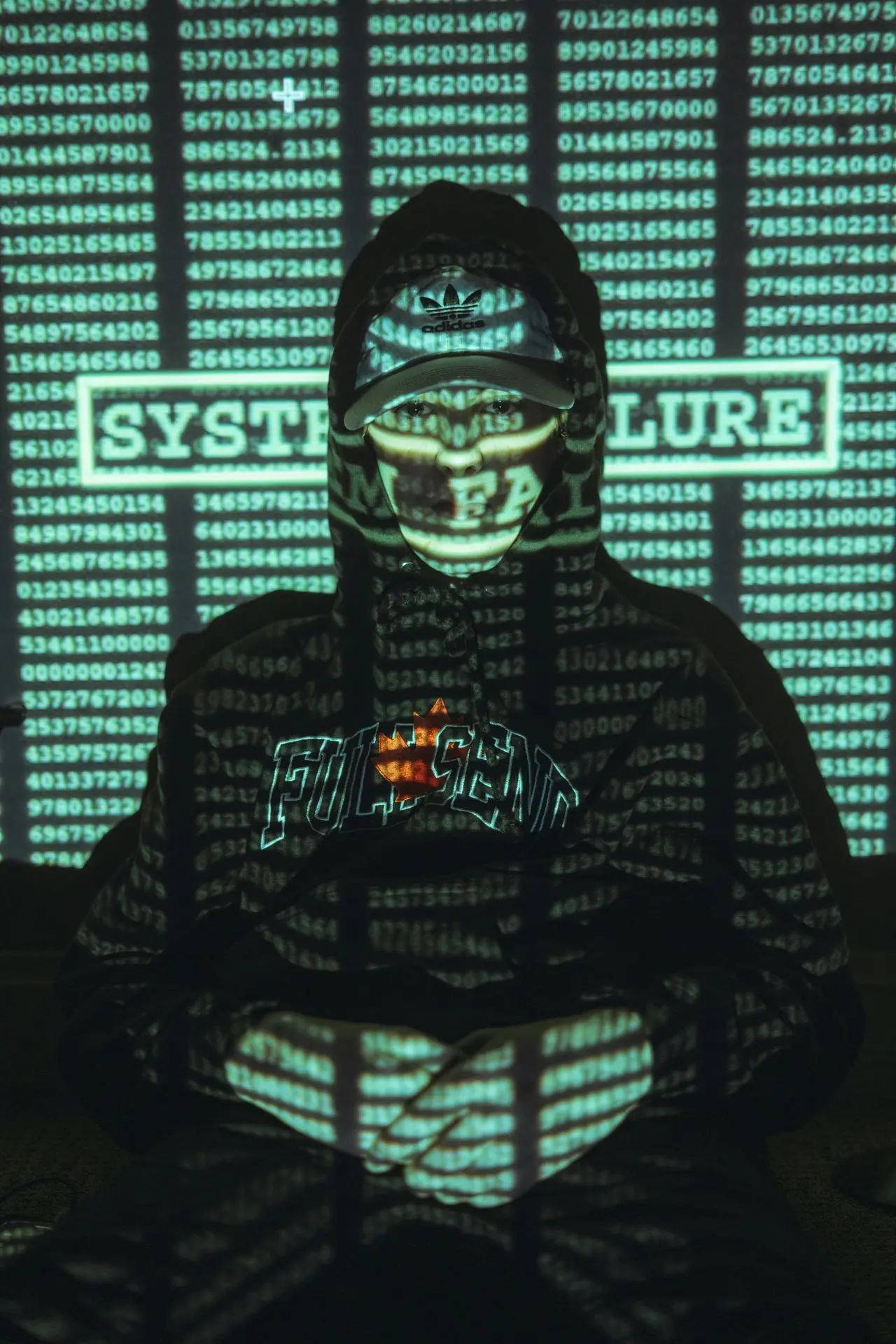ANZFSS25 Symposium Delivery
The 27th Symposium of the Australian and New Zealand Forensic Science Society, was held in October 2025.
The team proudly delivered 6 papers and a workshop.

The topics our team delivered on
- Bridging Physical and Digital Forensics (Keynote)
- Practical Cyber Forensics (Workshop)
- Digital Forensics in Counter-Terrorism
- Leveraging AI and Data Analytics in Digital Forensics
- Ensuring Quality and Accreditation in a Converging Forensic Landscape
- Securing & Authenticating Digital Evidence in Cloud Ecosystems
- Enhancing Cyber Forensics Education

Bridging Physical and Digital Forensics
Enhancing Investigative Intelligence Through Cyber Forensics and Data Analytics
Dr Bryce Antony, Rachel Cleary
Keynote:
Forensic science has long relied on physical evidence—biological traces, ballistic trajectories, and chemical compositions—to reconstruct events and identify perpetrators. However, in an era where digital footprints accompany nearly every physical action, integrating digital forensic intelligence into traditional methodologies is not just advantageous but required.
This presentation explores how digital forensic intelligence and data analytics can enhance—rather than replace—conventional investigative techniques. By correlating digital artifacts with physical evidence, forensic scientists can uncover deeper insights, strengthen case narratives, and improve evidential accuracy.
Key areas of exploration include:
- Augmenting Crime Scene Analysis: Digital forensic tools assist in reconstructing event timelines through metadata analysis, complementing traditional scene processing.
- Validating Physical Evidence: AI-driven pattern recognition helps verify chain-of-custody integrity and cross-reference digital records with physical findings.
- Predictive Analytics in Forensic Investigation: By leveraging historical case data, forensic scientists can identify trends that refine both digital and physical investigative approaches.
Case studies are presented of a hybrid investigation where physical evidence (trace residues) and digital intelligence (GPS logs, encrypted communications) converged to solve a complex criminal case. This example underscores how digital forensic methodologies do not challenge the role of traditional forensics but instead provide a crucial layer of verification and context.
By embracing digital forensics as an ally to physical sciences, the forensic discipline can evolve in step with modern criminal methodologies. This paper advocates for a collaborative approach, fostering interdisciplinary dialogue to ensure forensic science remains comprehensive, adaptive, and fit for contemporary investigative challenges.

Practical Cyber Forensics
Enhancing Secure Communication, Data Transmission, and Storage – Simple and Effective Techniques
Dr Bryce Antony, Rachel Cleary
Workshop:
In an era where digital data is increasingly interwoven with any forensic investigation, understanding secure communication, encrypted data transmission, and protected storage is critical for both digital and physical forensic practitioners. While encryption is often viewed as a challenge to forensic investigations, it is also a vital tool for preserving evidential integrity, securing sensitive forensic findings, and ensuring compliance with modern forensic standards.
This hands-on workshop introduces forensic professionals to practical, accessible techniques for leveraging simple and effective encryption will enhance investigative processes without requiring extensive technical expertise.
Participants will learn:
- The Role of Encryption in Forensic Science: How securing digital communications and evidence storage strengthens forensic workflows without compromising accessibility.
- Simple Yet Effective Encryption Techniques: Step-by-step demonstrations of how enhanced encryption can be applied to forensic case files, communication channels, and data repositories using freely available tools.
- Enhancing Evidential Integrity and Chain of Custody: Practical methods for encrypting forensic data to prevent unauthorised access while ensuring admissibility in legal proceedings.
Through guided exercises, participants will encrypt and decrypt forensic case files, securely transmit sensitive data, and explore how encrypted digital evidence can be validated and accessed within a forensic framework. Real-world case studies will illustrate how forensic professionals across disciplines can benefit from integrating encryption into their existing methodologies.
This workshop is designed to bridge the gap between traditional forensic science and digital forensics, demonstrating how encryption serves as a protective measure rather than an investigative barrier. By equipping forensic practitioners with essential cybersecurity skills, this session ensures that forensic investigations remain secure, resilient, and aligned with modern best practices.

Digital Forensics in Counter-Terrorism
Strengthening Traditional CBRN Investigations with Cyber Intelligence
Dr Bryce Antony
The forensic analysis of chemical, biological, radiological, and nuclear (CBRN) threats has traditionally focused on physical evidence—trace detection, material composition, and contamination patterns. However, modern terrorist networks increasingly rely on digital communication, supply chain manipulation, and cyber-enabled coordination to execute attacks. To maintain forensic integrity in
CBRN investigations, integrating digital forensic intelligence alongside physical analysis is not just beneficial, it is imperative.
This paper explores how digital forensic methodologies enhanced traditional CBRN investigative techniques, ensuring a more complete and intelligence-driven response.
Key areas of focus include:
- Tracking Material Procurement and Distribution: Digital forensic analysis of online transactions, darknet marketplaces, and encrypted communications can provide crucial intelligence on the sourcing of hazardous materials.
- Enhancing Attribution and Intent Analysis: Investigating metadata from seized devices, communication logs, and geolocation data helps contextualise physical evidence, strengthening the evidential chain.
- Mitigating Cyber-Physical Threat Convergence: AI-driven data analytics can identify emerging cyber threats linked to CBRN activity, such as industrial sabotage or the compromise of hazardous material storage facilities.
A case study is presented on an international counter-terrorism operation where physical evidence (chemical residues) and digital intelligence (social media forensic analysis, IP tracking) worked in tandem to dismantle a threat network. This example illustrates how digital forensics does not replace traditional CBRN analysis but instead provides an additional layer of investigative depth, aiding in prevention, attribution, and prosecution.
By fostering interdisciplinary collaboration between forensic scientists, cyber analysts, and law enforcement, the forensic community can strengthen its response to evolving terrorist methodologies. This paper advocates for a unified forensic approach to counter-terrorism, where digital and physical evidence are leveraged together for maximum investigative impact.

Leveraging AI and Data Analytics in Digital Forensics
Enhancing Investigative Efficiency and Intelligence
Dr Bryce Antony, Rachel Cleary
As the volume and complexity of digital evidence continue to grow, forensic investigations increasingly rely on artificial intelligence (AI) and advanced data analytics to process large datasets efficiently. Traditional manual analysis is not able to keep pace with sophisticated cyber threats, requiring a shift towards automation and intelligence-driven forensic methodologies.
This presentation examines how AI-driven forensic intelligence and data analytics are transforming digital investigations, focusing on real-world applications in cybercrime detection, evidence correlation, and predictive threat analysis.
Key areas of exploration include:
- Automated Log Analysis: AI-powered tools assist investigators in detecting anomalies in system and network logs, reducing analysis time and identifying critical evidence faster.
- Pattern Recognition in Digital Evidence: Machine learning models are applied to recognise patterns in large datasets, such as fraudulent transactions or insider threats, enhancing investigative efficiency.
- Predictive Analytics for Cyber Threats: AI-driven analytics help forecast potential attack vectors based on historical forensic data, enabling proactive security measures.
Case studies are presented on the use of AI-enhanced forensic techniques when investigating largescale data breaches. The studies demonstrate how automated data correlation across multiple devices and networks uncovered hidden connections, significantly reducing the time required to attribute responsibility.
However, challenges remain, including algorithm transparency in AI-driven forensic decision-making and legal admissibility concerns. The presentation concludes with recommendations for ensuring reliability and ethical use of AI in digital forensics, advocating standardised validation frameworks and interdisciplinary collaboration between forensic analysts, legal experts, and AI researchers.
Integrating AI and data analytics into forensic investigations can enhance the ability to uncover critical evidence, strengthen cyber intelligence, and adapt to the rapidly evolving digital forensic landscape.

Ensuring Quality and Accreditation in a Converging Forensic Landscape
Dr Bryce Antony, Rachel Cleary
Forensic science is governed by rigorous quality assurance frameworks, ensuring that physical evidence is collected, analysed, and presented in accordance with strict legal and scientific standards. However, as investigations increasingly rely on digital evidence—often intersecting with physical forensic workflows—established quality management frameworks must evolve to maintain evidential integrity across both domains.
This presentation explores the growing need to integrate digital forensic quality assurance with traditional forensic science, ensuring consistency in accreditation, chain of custody, and evidential validation.
Key areas of discussion include:
- Cross-Disciplinary Standards Compliance: Aligning digital forensic practices with established frameworks such as ISO/IEC 17025 ensures that digital evidence meets the same high standards as physical forensic methodologies.
- Maintaining Chain of Custody in Hybrid Investigations: As digital artifacts frequently correlate with physical evidence (e.g., location metadata supporting DNA findings), ensuring procedural integrity across disciplines is critical.
- Adapting Quality Control Mechanisms: Traditional forensic validation methods must be adapted to include the verification of digital forensic tools, ensuring reliability and reproducibility in court-admissible investigations.
A case study is presented of a forensic investigation where both physical and digital evidence were crucial in reconstructing an incident. The study demonstrates how integrating digital forensic quality controls—such as forensic hashing, peer-reviewed methodologies, and audit trails, strengthened the overall evidential framework.
Rather than disrupting forensic science, digital forensics serves as a natural extension of established forensic quality assurance principles. This paper advocates for a unified accreditation approach that maintains the highest forensic standards, ensuring that the integration of digital evidence enhances, rather than complicates, forensic science’s role in presenting quality evidence for judicial review.

Securing & Authenticating Digital Evidence in Cloud Ecosystems
Challenges and Emerging Methodologies
Dr Bryce Antony
As digital forensic investigations increasingly involve cloud environments, ensuring the integrity, authenticity, and chain of custody of digital evidence has become a significant challenge. Unlike traditional on-premises data storage, cloud-based systems introduce complexities such as multijurisdictional data storage, volatile evidence, and reliance on third-party providers. These factors necessitate a shift in forensic methodologies to ensure admissibility in court and compliance with legal frameworks.
This presentation explores the primary challenges associated with digital evidence preservation in cloud environments, focusing on issues such as:
- Data Volatility and Ephemeral Storage: Cloud providers frequently redistribute data, making forensic preservation problematic.
- Jurisdictional and Legal Barriers: Data may be stored across multiple international servers, complicating legal authority and access rights.
- Chain-of-Custody Complexity: Investigations may rely on multiple service providers for evidence acquisition and analysis, which requires complex chain-of-custody considerations.
To address these challenges, we examine emerging methodologies designed to maintain forensic soundness. These include blockchain-based evidence integrity verification, remote forensic evidence preservation techniques that minimise reliance on third party software / applications, and advancements in AI-powered evidence correlation to reconstruct potentially fragmented cloud data. We also highlight the role of evolving standards such as ISO/IEC 27037 in guiding best practices for digital evidence preservation in cloud environments.
By integrating these methodologies, forensic professionals can enhance the credibility and admissibility of cloud-based evidence. The paper concludes by discussing future directions, including the potential for automated evidence integrity checks and the need for stronger cross-border legal frameworks to facilitate international cooperation in digital investigations.
This presentation contributes to the ongoing development of forensic science evidence preservation by bridging the gap between technological advancements and legal requirements, ensuring that digital evidence remains robust in the face of cloud-driven complexities.

Enhancing Cyber Forensics Education
Insights from Real-World Student Engagement and Skill Development
Dr Bryce Antony, Rachel Cleary
The challenge presented by the evolving landscape of cybercrime demands that forensic education moves beyond theoretical instruction to incorporate practical, hands-on training. The gap between academic learning and industry expectations requires structured engagement with real-world forensic scenarios, ensuring that students acquire the investigative skills necessary for professional practice.
This presentation presents a real-world analysis of several years of undergraduate and postgraduate cybersecurity and digital forensics coursework, assessing student engagement, learning outcomes, and feedback. The study evaluates how structured practical exercises, including live forensic cases, simulated cyber incident response, and industry-aligned challenges—have impacted student proficiency.
Key findings highlight:
- Skill Progression: Postgraduate students consistently demonstrate enhanced analytical capabilities when building undergraduate hands-on training in digital forensics, evidence analysis, and result correlation.
- Industry Readiness: Direct engagement with industry tools, alongside simulated breach investigations, improves student preparedness for digital forensic roles.
- Challenges and Solutions: Student feedback indicates initial difficulties in dealing with large datasets and real-world ambiguity in evidence collection, necessitating iterative improvements in training methodologies.
This presentation demonstrates key case scenarios, focused on advanced forensic challenges where postgraduate students conduct end-to-end investigations of simulated threats, correlating network logs, endpoint data, and cloud-based artifacts.
Therefore, bridging the gap between students and industry mentors demonstrates the value of hands on exposure in developing problem-solving capabilities and evidential reasoning.
This presentation concludes with recommendations for enhancing digital forensic education, increased integration of real-world case studies, collaboration with law enforcement and industry, and the development of adaptive learning environments designed to simulate evolving cyber threats. These insights contribute to the ongoing refinement of digital forensics education, ensuring that graduates are equipped with the technical and analytical skills required for real-world investigations.